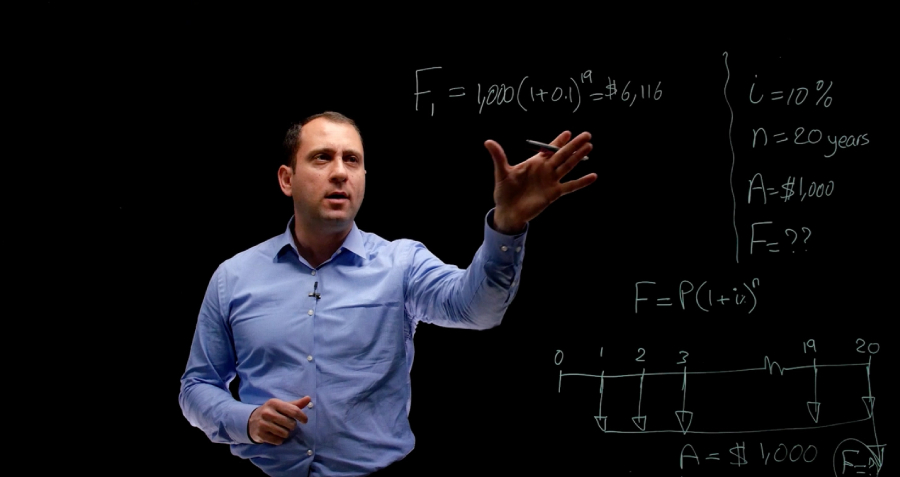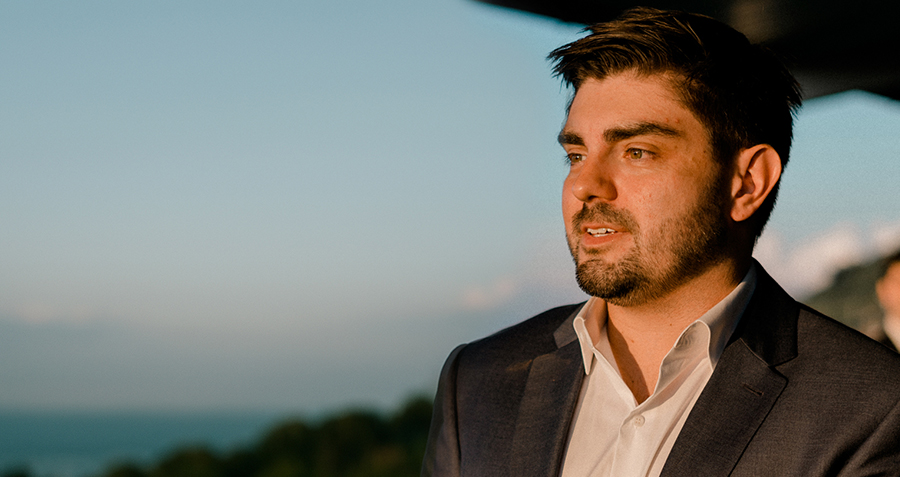According to the famed business professor, innovation is about finding the “jobs to be done” in our lives
“Innovation” in business, creating new products and services for consumers, is a difficult undertaking almost by definition. Many companies see the task as akin to gambling, and go about it by throwing ideas against the wall, hoping for something to stick. Professor Clayton Christensen, who has spent his career writing about business and innovation, says that this is the wrong idea. In his latest book, Competing Against Luck: The Story of Innovation and Consumer Choice, he argues that companies should instead adopt a more focused, process-oriented approach of finding the “jobs” that customers need to do in their lives, and creating products that make those jobs easier. In his view, there is nothing “lucky” about success in this area, so long as you know the right questions to ask.

Christensen is the Kim B. Clark Professor of Business Administration at Harvard Business School. He has authored numerous books over his decades-long career, some of which have become classics in the business genre.
Q. Perhaps your most famous book, The Innovator’s Dilemma, is almost 20 years old—in 2011 The Economist called it one of the best books of all time. What keeps the book relevant despite progressively faster change in business and technology?
A. The Innovator’s Dilemma is based on theory, which we define as a statement of what causes what to happen, and why. The theory of disruptive innovation helps predict what competitive threats companies are likely to face, and helps managers predict what actions they’ll need to take to address them. Good theory is applicable across time and industries and is thus not trendy or relevant only to specific companies in vogue at the time. Thus, the theory is as relevant today as it was 20 years ago.
Q. Competing Against Luck is also about innovation. Can you explain the central concept behind the catchy title?
A. In spite of all of the advances in analytical tools and techniques and unprecedented levels of data on customers, too many organizations still consider innovation a game of chance. Try enough things and eventually you’ll get something right. Play the odds and hope to get lucky. My co-authors and I believe that innovation doesn’t have to be a game of chance if you truly understand how people make the decision to purchase one product or service over all other options. Once you understand the causal mechanism of that decision, what we call a “Job to Be Done,” you don’t have to count on luck with innovation. You can create products and services that you know in advance customers will want, and can leave relying on luck to your competitors.
Q. “Jobs Theory” in the book tries to provide a framework to answer what causes a customer to purchase a certain product. Can you explain the difference between researching a customer’s “Job To Be Done” and simply researching their needs?
A. We define a “Job to Be Done” as the progress a customer seeks in particular circumstances. Both parts of that definition are important: A customer is looking to achieve something that she has been struggling with, and the circumstances in which she is trying to achieve that matter in how she’ll try to solve that struggle. A well-defined job, which should have not only functional, but emotional and social dimensions, offers a kind of innovation blueprint. This is very different from the traditional marketing concept of “needs” because it entails a much higher degree of specificity about what you’re solving for. Needs are ever present and that makes them necessarily more generic. “I need to eat” is a statement that is almost always true. “I need to feel healthy.” “I need to save for retirement.” Those needs are important to consumers, but their generality provides only the vaguest of direction to innovators as to how to satisfy them. Needs are analogous to trends—directionally useful, but totally insufficient for defining exactly what will cause a customer to choose one product or service over another. Jobs take into account a far more complex picture: The circumstances in which I need to eat can vary widely.
Q. How do you spot a “Job?”
A. There are lots of ways to identify “Jobs To Be Done,” but among them we discuss a number of important questions to ask yourself in the book. Here are five of them:
The first is to look in the mirror and ask yourself, “do you have a job that needs to be done?” If you identify a job, it’s likely that others will have that job, too. The second is, “where do you see non-consumption?” You can learn as much from people who aren’t hiring any product as from those who are. Non-consumption is often where the most fertile opportunities lie. Another is, “what workarounds have people invented?” If you see consumers struggling to get something done by cobbling together workarounds, then pay attention to that. They’re probably deeply unhappy with the available solutions—and are a promising base of new business. The fourth is, “what tasks do people want to avoid?” There are plenty of jobs in daily life that we’d just as soon get out of. We call these “negative jobs.” Finally there is, “what surprising uses have customers invented for existing products?” Recently, some of the biggest successes in consumer packaged goods have resulted from a job identified through unusual uses of established products. For example, customers began taking Vicks NyQuil, the cold and flu medicine, when they were not sick because it helped them sleep. In response Vicks came up with ZzzQuil.
Q. And how much does the process of spotting a job differ in the consumer and B2B worlds?
A. For B2B, the same types of activities you use for B2C job-spotting are still applicable, including in-depth interviews, observation, and looking for compensating behaviors. As for B2C, the most important thing is not the specific research mode but the questions you are trying to answer and the insights you are seeking. My co-author David Duncan and his colleagues at Innosight do a lot of work in this area and they would say that one critical difference is that a B2B customer is often not just one person, but a set of people who interact in some way to decide what product or service to purchase. So instead of an individual pulling a product or service into his life, it’s the whole decision-making system that does this. Each of these people has their own “Jobs to Be Done,” some of which are individual jobs, for example, “I don’t want to look dumb in front of my boss.” And some of which are jobs they have on behalf of the organization by virtue of their role in it, for example, “I have to procure reliable supplies.” So the main difference in spotting jobs for B2B is that you have to identify and take into account a broader set of individuals, understand their “Jobs to Be Done,” and then synthesize the resulting learnings to define the B2B job as a whole. But at its core, it is the same—it’s about making progress in particular circumstances.
Q. Can you do this process in reverse (start with a solution vs a job)?
A. Yes. In fact this circumstance is very common, especially in technology-heavy or R&D-heavy companies. Researchers and scientists and engineers are constantly coming up with new technologies and asking “how could we make money from this?” My colleagues at Innosight have worked with many companies going through this process and what they’d say is that even if you’re starting with a solution and working back to identify a job that it might solve, the most important thing is that, when you are done, you have answered the complete end-to-end set of questions: who is the customer, what is the progress they’re trying to make, what are the circumstances, and so on.
Q. One of my favorite ideas from the book was “cheaper and crappier is better than nothing.” What’s the balance between making something good and getting it out there quickly?
A. What’s important is that the new product solves a “Job To Be Done” that is being underserved. For example, the first transistor radios had poor audio quality, but they allowed my brothers and I to listen to rock n’ roll music outside of the earshot of our mother. Having a radio in our pocket—even with its poor audio quality—was infinitely better than having nothing. So it’s not always about getting a product out quicker or not, it’s about fulfilling an underserved job well enough.




















